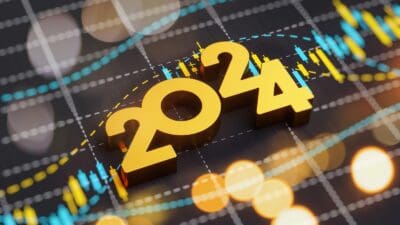The big FTSE 100 banks release their annual results this week. HSBC (LSE: HSBA) kicked off the season, saying it “delivered a solid performance” in 2016. However, the shares fell by as much as 6% in early trading on Tuesday.
Numbers
HSBC’s reported numbers didn’t impress, with statutory pre-tax profit falling 62% to $7.1bn, as one-off costs and multibillion-dollar writedowns took their toll. These included a $3.2bn impairment of goodwill in the private banking business in Europe, $3.1bn of upfront costs to achieve longer-term annual cost savings, adverse changes in the fair value of the bank’s own debt and the impact of the sale of its operations in Brazil.
The statutory bottom-line profit was further hit by an effective tax rate of 51.6%, as a result of which basic earnings per share (EPS) fell 89% to $0.07 from $0.65.
Most of the items that contributed to the disappointing statutory results had no impact on capital, even though they were material in accounting terms. However, the underlying performance of the bank was also below analysts’ expectations. Adjusted pre-tax profit came in at $19.3bn compared with a City consensus of $20.3bn.
Valuation
HSBC didn’t give an underlying EPS number but based on adjusted pre-tax profit and a 20.6% tax rate (representing the mix of standard tax rates in the countries in which the group’s profits arise), I calculate an underlying EPS number of $0.78 (around 63p).
Based on this number and HSBC’s current share price of 665p, the trailing price-to-earnings (P/E) ratio is 10.6. Meanwhile, a dividend of $0.51 (around 41p) — which the board says it’s “confident of maintaining at this level” — gives a yield of 6.2%.
On the face of it, the P/E and yield are highly attractive but what of the outlook?
Outlook
On one hand, HSBC said it’s recently upgraded its forecasts for global economic growth “reflecting the likelihood of a shift in US fiscal policy and a broader based cyclical recovery”. On the other hand, it commented: “Forecast global growth remains slightly lower than its long-term trend with risks largely to the downside”.
These risks include possible protectionist measures from the new US administration impacting global trade, uncertainties facing the UK and EU as they enter Brexit negotiations and the impact of a stronger dollar on emerging economies with high debt.
Aside from the macro outlook, HSBC says it enters 2017 with “the restructuring of the Group essentially completed”. There’s still work to do on reducing costs and improving profitability but I’m expecting statutory numbers and adjusted numbers to have moved much closer together by the end of 2018.
Long term
There are always uncertainties in the world but I believe HSBC’s capital strength and global universal business model stand it in good stead for the long term. When we get to 10 years on from the end of the 2008/9 financial crisis, I can see my current trailing P/E for the bank of 10.6 being closer to the long-term trailing historical average for the FTSE 100 of about 16.
This would imply a share price back to its pre-crisis high of above 1,000p . So, 50% upside and with annual dividends of over 6% on top. Of course, this may be optimistic if the downside risks to the macro outlook do materialise. However, it generally pays to be an optimist when it comes to long-term investment in the stock market and, as such, I personally rate HSBC a ‘buy’.







